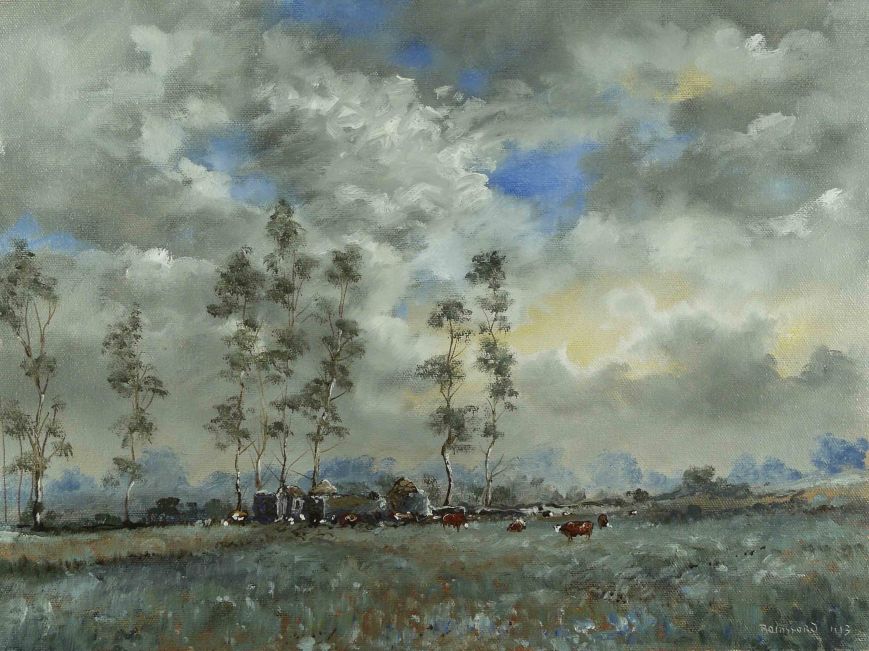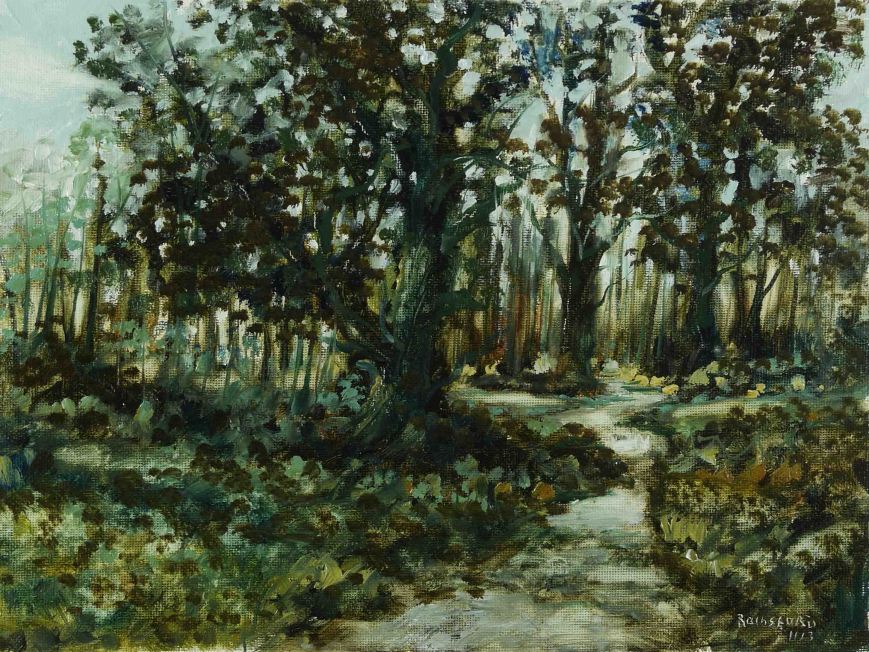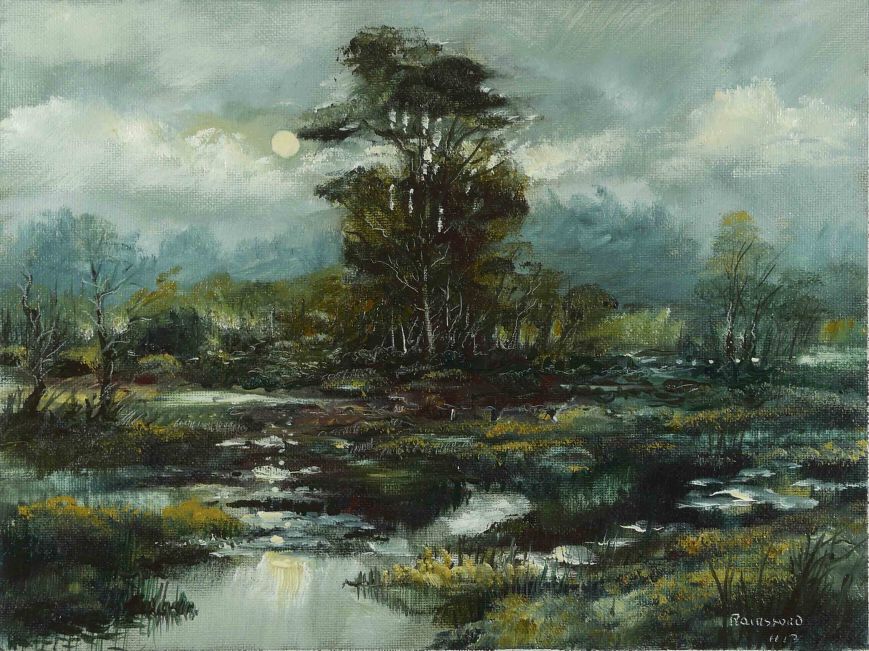The day is calm, cold with a light dusting of snow. I like dramatic skies but for this scene I had to resist the urge and paint a ‘flat’ sky.
As you will see in the accompanying video, I put a pattern of cloud-like shapes in the sky area. These are ‘islands of paint’ on the blank canvas. Part of this area has a wash of Raw Sienna and solvent only. This was allowed to peep through the later layers to suggest sunset colours behind the gloom of grey. When these ‘islands of paint’ are blended with a flat brush they join up and produce an almost invisible pattern. The original ‘islands’ had a rough perspective applied, that is, the bigger shapes were higher up and slightly darker in colour.
The mid-ground, snow covered field needed an underlying pattern for the same reasons as the ‘flat’ sky needed a bit of variation. This area was coated in a transparent layer, with Liquin medium added. This was then lifted off with a brush moistened with solvent. When the pure white was lightly brushed onto this, a range of subtle colours were produced. There is transparency and opacity in this area, better than a thick layer of white.
The size is 16″ x 12″ and was painted in about 2 hours. 3 colours only used, Raw Sienna, Raw Umber and Prussian Blue plus white but no black. As mentioned, Liquin was used to produce smooth transparent washes and help with the fine lines painted onto the wet under layers.
Here’s the video. See you soon.





